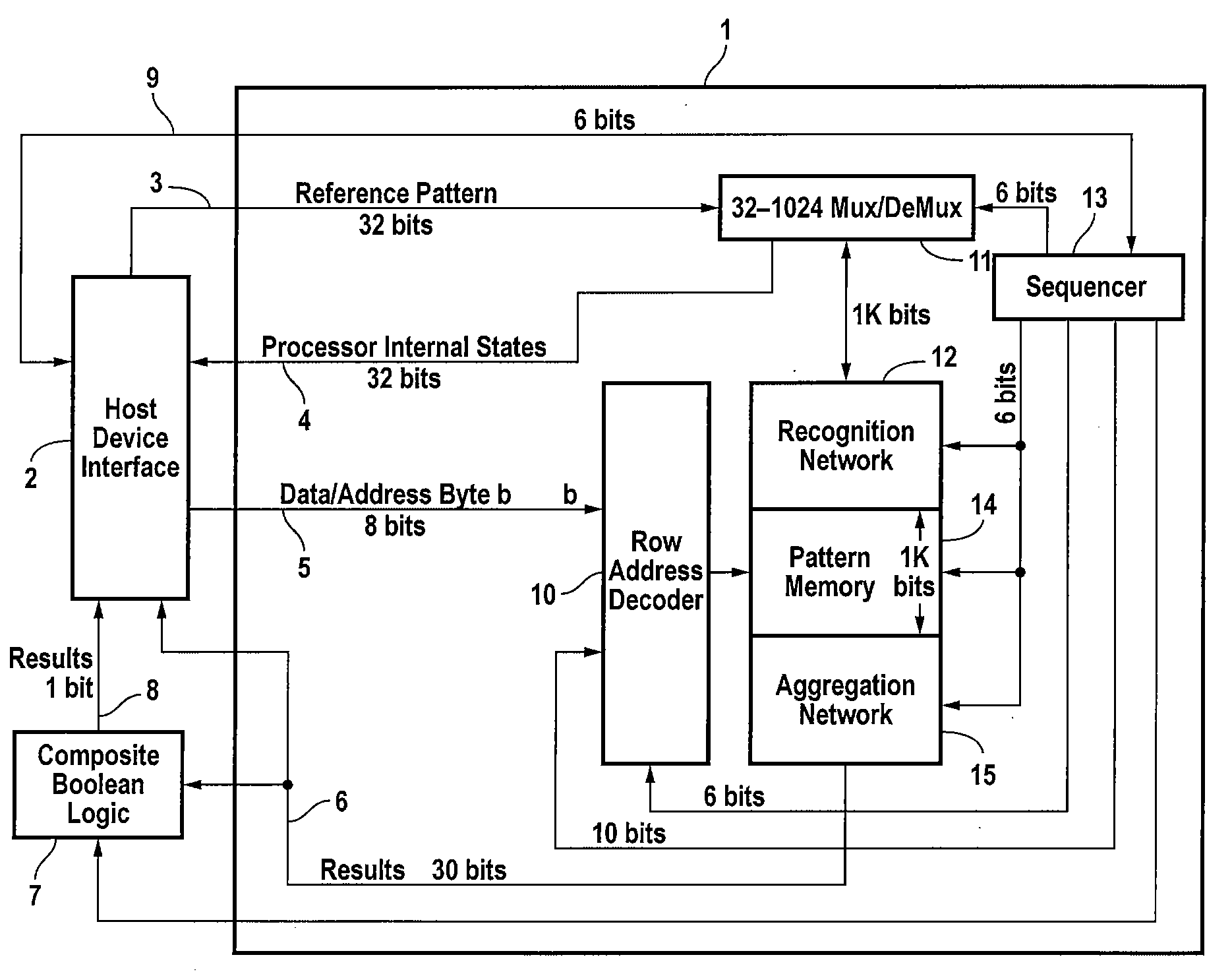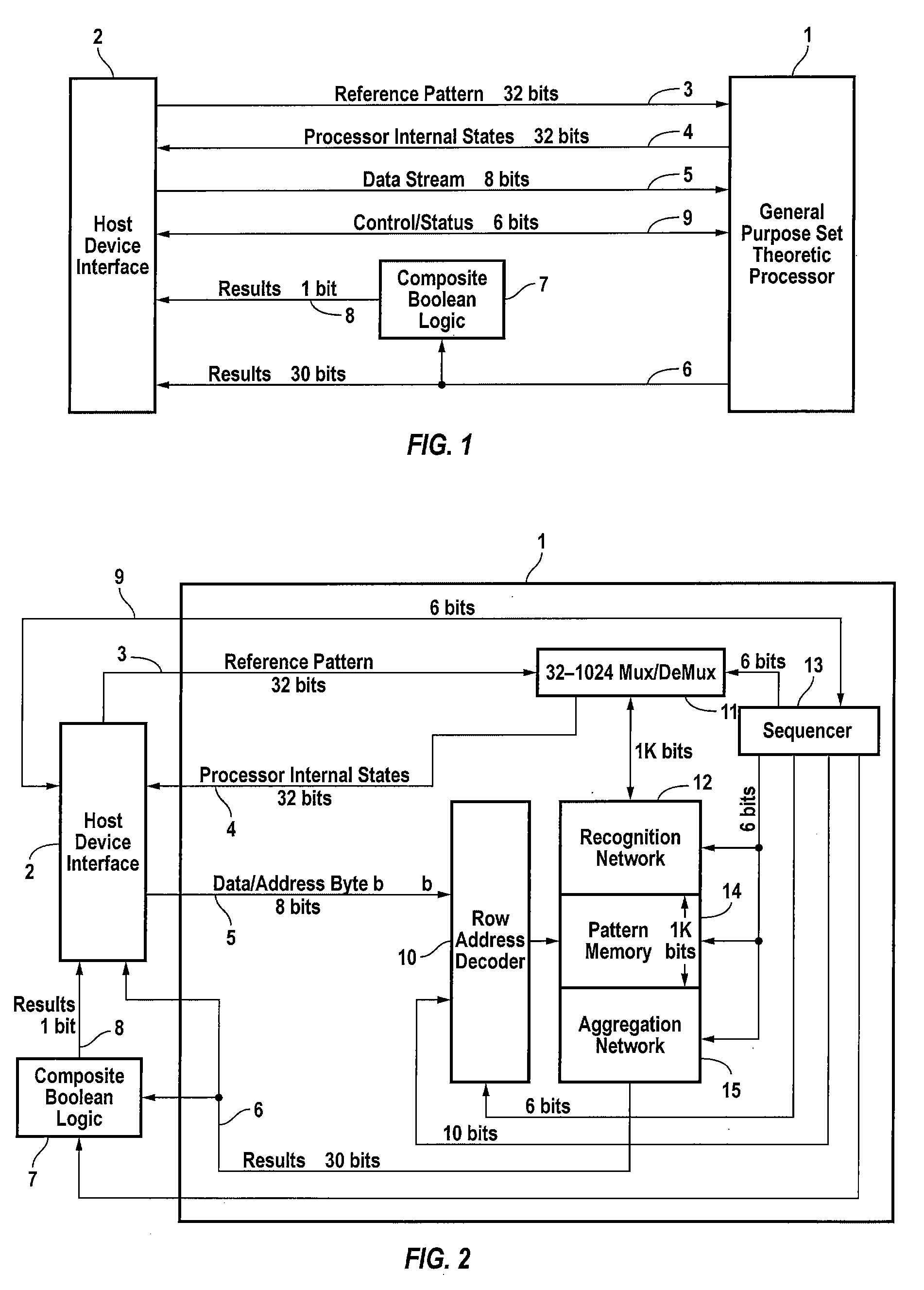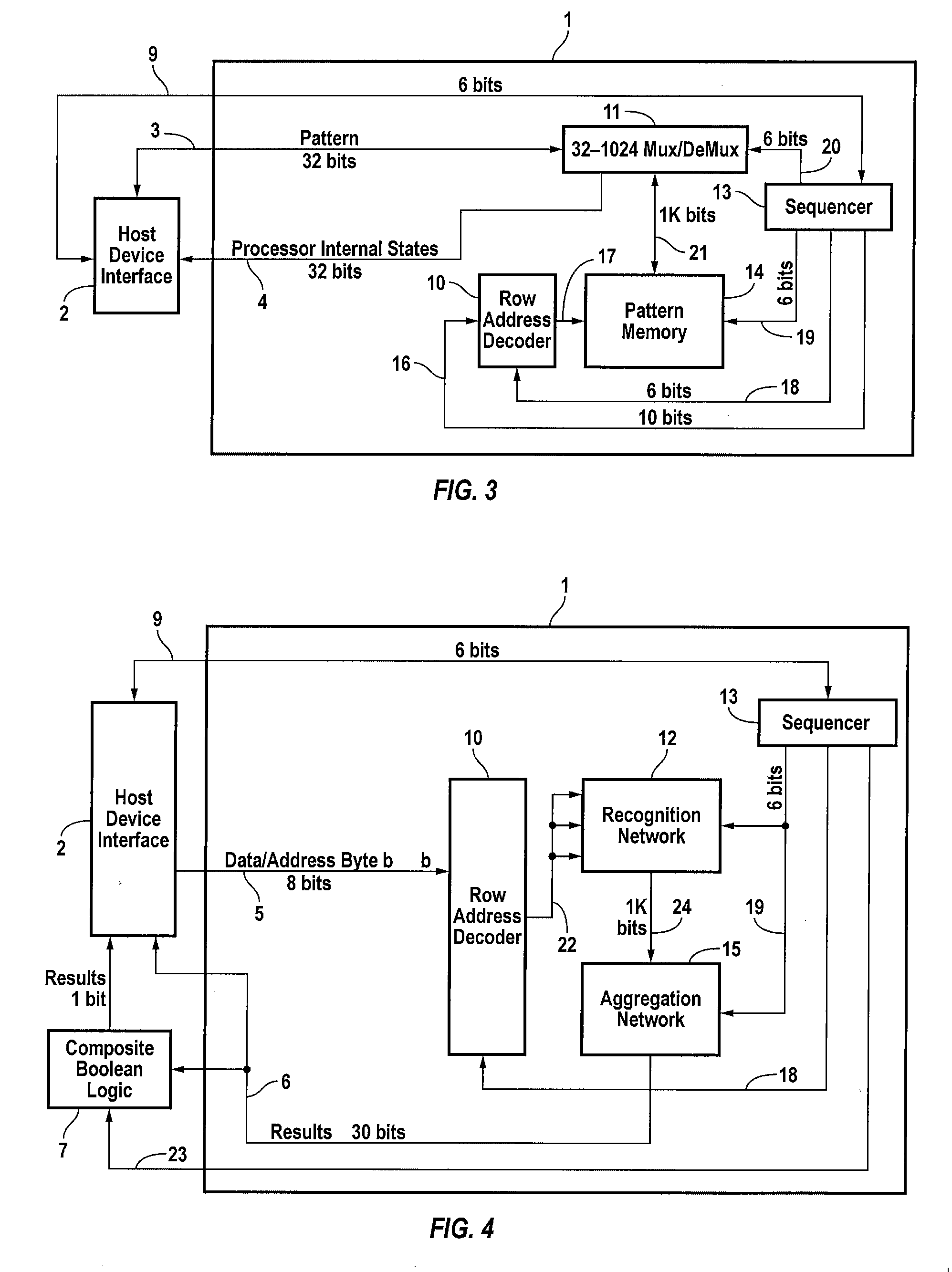False positives occur when the scan results in irrelevant patterns.
False Negatives occur when the scan fails to identify patterns that are, in fact, relevant.
The state of the art is still far from realizing, simultaneously, specifiable acuity,
throughput at the speed of
silicon, scale from single user to federated users and cost levels that small and
medium enterprises and even individuals can afford.
If the reference is a string consisting of multiple characters in a specific sequence, i.e., representing a word of text, or a music melody or a genomic pattern, then a more complicated program is required.
This is known as the
combinatorial explosion problem because the number of
machine cycles increases as the square of the number of conditional matches.
Such operations typically consume thousands of
clock cycles and there is no upper limit.
If the reference consists of a
phrase, e.g., a string of words in a specific order, then the program, using
recursion, is only somewhat more complicated but the
combinatorial explosion can become even more dramatic and can consume billions of
clock cycles.
Although grid configurations of megaflop processors can supply the clock cycles the expense of the device quickly becomes prohibitive and
throughput can be in the range of only a few characters per second.
This approach invokes the well known problem of retrieving citations that are irrelevant (false positives) thus incurring waste and cost.
A not so well known but worse outcome is that are truly relevant patterns in the data being scanned are not recognized (false negatives) because the content was not represented with sufficient fidelity by the key words used.
Attempts to extract meanings from text are frustrated by the complexity of the problem but more so by the indexing to terms as noted in the previous
paragraph.
This approach to
recovery of meanings in the censored text can never overcome the limitations imposed by the censoring in the first place.
Cost and throughput are highly suspect.
These have demonstrated speed improvements in the single digit range but also increased cost.
In the limit, the basic Von Neuman stored program computer simply cannot exhibit the speed / cost ratios available with other implementations.
Being complex logic devices, special purpose processors are not only expensive to produce (product cost exceeding $10,000) but also subject to failure rates that frustrated operational users.
Further, the designs were neither scalable nor extensible.
Does not accommodate equivalence classes.
Being ever more complicated, logic devices using parallelism for throughput in various string
pattern matching scenarios each exhibited cost limitations were limited in
scalability as well.
Also, precise internal timing of the logic circuits made it nearly impossible to re-implement them as
semiconductor technology advanced.
While improving performance these approaches do not reduce costs and none to date have yielded significant improvements regarding the acuity measure of effectiveness.
These have proven effective in specific applications such as email spam signature identification and
adaptive tracking but do not exhibit the speed and performance for general application.
Application-specific devices have been devised for pattern matching of 2D and 3D images, but do not have the Boolean, semantic and set theory logic.
Shortfall in throughput and cost.
Inventions and embodiments to date have been
application specific and have not allowed sufficiently quick reconfigurations of the switching network.
Search engines or adjunct
software did not greatly aid how humans formulated queries.
Linguists created very sophisticated preprocessing and post
processing software but these did not make significant improvements in acuity, throughput,
scalability or cost, let alone improving all at the same time.
Search engines or adjunct
software did not greatly aid how humans formulated queries.
Meanwhile, linguists created very sophisticated preprocessing and post
processing software but these did not make significant improvements in acuity, throughput, scalability or cost, let alone improving all at the same time.
 Login to View More
Login to View More  Login to View More
Login to View More 


